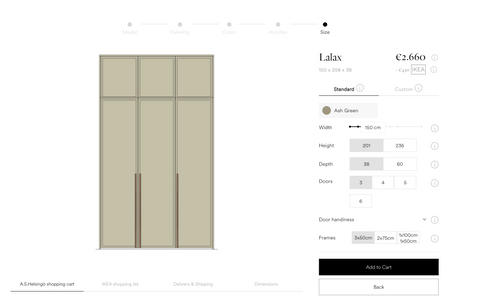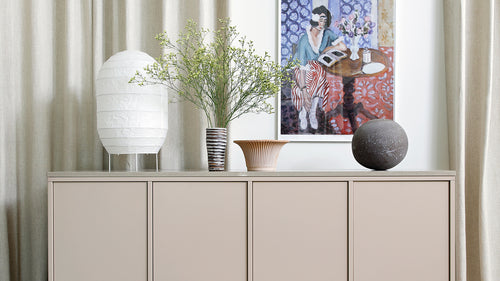Step 1
Prepare the surfaces and mouldings to be painted by cleaning them. Protect floors with protective paper and carefully mask the mouldings and wall edges of the area to be painted. Also mask around sockets and light switches.
Step 2
Mix the paint thoroughly with a wooden spatula and then pour the paint into the paint tray.
Step 3
Start by painting the masked edges with a paint brush. Also paint around sockets and light switches.
Step 4
Paint the rest of the wall with a roller from top to bottom, one strip at a time. Dip the roller in the deep end of the paint ray and roll the excess paint off on the front of the tray. This prevents paint from spattering on the floor and makes for a smooth finish. The roller doesn’t need to be completely submerged in the paint tray.
Step 5
Leave the surface to dry for 1-2 hours before painting a second coat.
Step 6
Paint the wall again in the same way.
Step 7
Remove the tape while the wall is still damp. It comes off easily at a 45-degree angle. The paint dries in a few hours, but we recommend that you don’t put up any wall hangings until the following day.

 Looking for the perfect colour? Order samples
Looking for the perfect colour? Order samples
 How to buy a kitchen? Read our guide
How to buy a kitchen? Read our guide
 Explore Wardrobe Collection
Explore Wardrobe Collection
 Shop Wardrobe Doors
Shop Wardrobe Doors
 Get inspired – explore sideboards
Get inspired – explore sideboards
 Buy sideboard
Buy sideboard
 Buy bathroom vanity
Buy bathroom vanity
 Colour sampling without painting: Adhesive swatches
Colour sampling without painting: Adhesive swatches
 Your life in colour - read our painting guide
Your life in colour - read our painting guide





